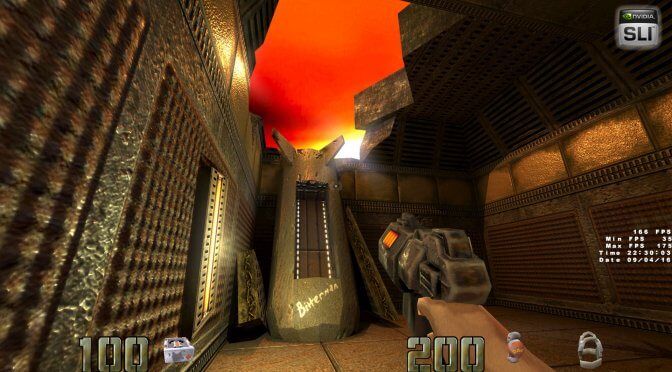Yesterday, we shared some screenshots from some new high quality weapons for Quake 2. And today, we are presenting you the final 2018 version of Quake2xp, perhaps the best mod for id Software’s classic title, that is available for download.
In case you weren’t aware of, QuakeIIxp is a multi-platform (windows, linux and freeBSD (experemental)) graphics port of Quake II with a completely updated rendering engine that takes full advantage of the latest graphics cards to get the perfect picture, preserving the original style of the game.
This basically means that Quake2xp features a lot of modern-day graphical effects that can improve the visuals of Quake 2. Some of them are real time per-pixel lighting and shadowing (like DooM3) with hi quality parallax mapping (relief mapping technology) with self-shadowing, oren-Nayar Diffuse with GGX Specular BRDF, Phong, Lambert and Sub-Surface Scattering lighting models, postrocessing effects like Bloom, Depth of Field, Radial Blur, Thermal Vision, Film Grain, Gamma/Brightness/Contrast/Saturation/Vibration, Motion Blur, SSAO, Scanline and mediam cinematic filters, as well as reflection (screen space local reflection) and refraction surfaces.
The latest version of Quake2xp comes with self shadowing parallax mapping, enviroment and sub surface scattering for bsp, new BFG ball and explosion effect, and adds color vibrance correction, adapted Turik’s hi-polygonal model pack and hi-res textures by Kurtis ‘Xenobond’ Smith.
Those interested can download this mod from here!

John is the founder and Editor in Chief at DSOGaming. He is a PC gaming fan and highly supports the modding and indie communities. Before creating DSOGaming, John worked on numerous gaming websites. While he is a die-hard PC gamer, his gaming roots can be found on consoles. John loved – and still does – the 16-bit consoles, and considers SNES to be one of the best consoles. Still, the PC platform won him over consoles. That was mainly due to 3DFX and its iconic dedicated 3D accelerator graphics card, Voodoo 2. John has also written a higher degree thesis on the “The Evolution of PC graphics cards.”
Contact: Email

